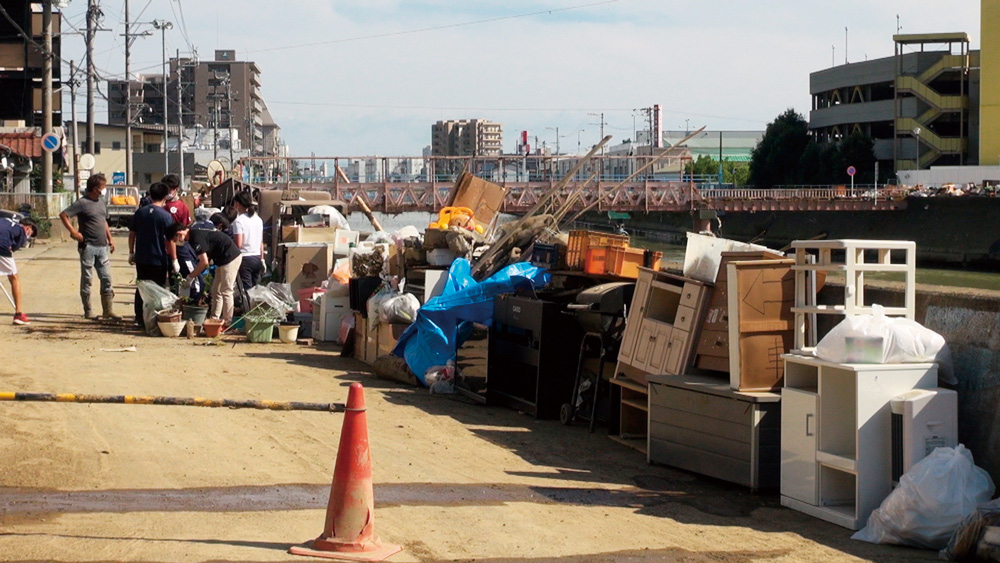!["Kokusô no hi" Director Arata Oshima A unique documentary that depicts the "indifference" of Japanese people like a horror movie [Director's Interview Vol.352]](https://cinemore.jp/images/a560cafa86074120cbf491505e35f1dfe1c66cf3203ecd3ed7268b36a18f7d64.jpg)
"Kokusô no hi" Director Arata Oshima A unique documentary that depicts the "indifference" of Japanese people like a horror movie [Director's Interview Vol.352]
Our well-trained staff conducts interviews directly.
Q: It took three days from the idea to filming, so I guess Director Oshima and the other nine directors didn't have enough time to meet.
Oshima: There were some people I could only talk to over the phone, but I wrote out a production plan and sent it to them, telling them, ``Please adhere to these points when filming.''
Q: For example, when a director goes to Kyoto, you don't tell him where in Kyoto to go.
Oshima: I didn't say that.
Q: This time, the director in charge of Kyoto is interviewing people who are cleaning up food stalls at Heian Shrine. You have taken some very good comments, but I guess you have no choice but to find them on the same day.
Oshima: We have no choice but to find it.
Q: As a director, it's quite a pressure.
Oshima: I think it's the pressure (lol)
Q: Since the staff members are acquaintances of director Oshima, there are many skilled documentarians.
Oshima: Mr. Takazawa, who went to Nagasaki, was introduced to me by a staff member at my company, but the other directors were people I had worked with in the past. The team was created through relationships such as people who used to be my assistants and people who were directors of programs that I was the producer of.
Q: The interaction between a high school student helping clean up the flood damage in Shimizu and a woman affected by the flood was very impressive, and I was surprised that it was able to be filmed in just one day of reporting. Directors have a lot of things to do, including luck.
Oshima: Masanori Komiyama is a senior author that I have admired since I was young, and he has written many masterpieces such as ``We, Hyakusho Kazoku'' on The Nonfiction (Fuji Television).
Q: I get nervous when I imagine what would happen if I participated as a director. I don't care what I would do if the quality of the shot was poor and my part wasn't used (lol).
Oshima: We only have one day to shoot, so there's always luck and bad luck, so that can't be helped. Of course, I think Mr. Komiyama was able to take the photos because he has the skills, but that doesn't necessarily mean that he will be able to take good material wherever he goes.

“Kokusô no hi” (C) “Kokusô no hi” Production Committee
Shoot with as flat a mindset as possible
Q: What were the specific rules for the interview?
Oshima: First of all, I want you to listen to the voices of all kinds of people, regardless of your own ideology or beliefs. I think most of the directors were against a state funeral. It doesn't matter whether you convey your opinion to the subject or not. Rather than just taking photos of people who think the same way as me, I asked them to take photos from a flat perspective. I also told them that I wanted them to focus their cameras on the ``everyday life'' that happens in that place.
Q: Were you given specific instructions on how to shoot?
Oshima: I asked for a fixed camera and a slightly drawn-out composition. I have no choice but to zoom and pan, but I try to keep it fixed as much as possible.
Q: Did you want to unify the images with a fixed-point observation style that doesn't reflect the photographer's emotions?
Oshima: I thought that was important this time. This is especially true of my previous two works, but I think I'm the type of person who intervenes in the subject. But this time, it wasn't like that, and I was conscious of staring at the subject. It felt like a sketch.

